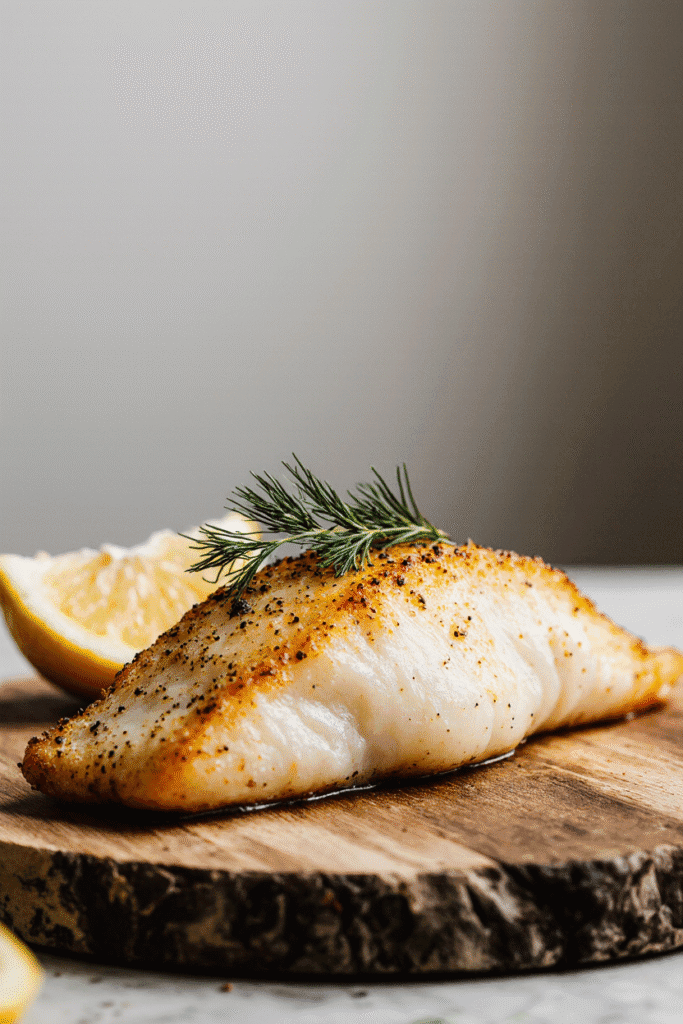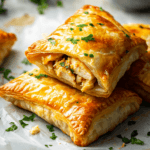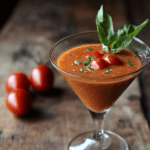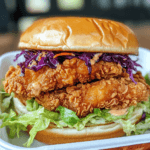walleye cheeks recipe are tender, flavorful morsels of fish that many people don’t realize they can enjoy. Located just below the fish’s eyes, these small, tender cuts are prized for their mild flavor and delicate texture. Walleye cheeks are a fantastic choice for a special dinner, as they can be prepared in a variety of ways. This recipe will guide you through preparing them simply, while ensuring that the natural flavors of the fish shine through.

Ingredients:
- 1 pound of walleye cheeks (or as many as you like)
- 2 tablespoons of unsalted butter
- 1 tablespoon of olive oil
- 1 clove garlic, minced
- 1 tablespoon of fresh lemon juice
- 1 teaspoon of lemon zest
- 1 teaspoon of fresh thyme (or dill if preferred)
- Salt and pepper to taste
- Fresh parsley, chopped (for garnish)
- Optional: A pinch of red pepper flakes for added heat
Instructions:
1. Clean the Cheeks (if necessary):
If you’ve bought walleye cheeks that are still attached to the fish, use a small knife to gently remove them from around the eye socket. It’s a delicate process, but the cheeks are worth the extra effort. Pat them dry with a paper towel to remove any excess moisture. If you’ve purchased them pre-cleaned, just make sure they’re dry before cooking.
2. Prepare the Pan:
Heat a large skillet over medium-high heat. Add the olive oil and butter. Allow the butter to melt and foam up. Once the foam subsides, it’s the perfect time to add your minced garlic. Sauté the garlic for about 30 seconds until it releases its fragrant aroma. Be careful not to burn the garlic as it can turn bitter.
3. Cook the walleye cheeks recipe:
Place the walleye cheeks into the skillet. Ensure that they are laid flat and cook in a single layer for even cooking. You should hear a gentle sizzle as they hit the pan. Cook for about 3-4 minutes on each side until they turn golden brown and are fully cooked through. The fish should flake easily when pressed with a fork.
4. Add Lemon and Seasonings:
Once the cheeks are done cooking, reduce the heat slightly and squeeze fresh lemon juice over the cheeks. Sprinkle lemon zest, fresh thyme (or dill), and a pinch of red pepper flakes (if you like a bit of spice) for added flavor. Season generously with salt and pepper. Give everything a gentle toss to coat the cheeks in the zesty flavors.
5. Serve and Garnish:
Transfer the walleye cheeks to a serving platter, drizzle any pan juices over them, and garnish with freshly chopped parsley. Serve immediately while they’re hot and juicy.
Serving Suggestions:
Walleye cheeks are extremely versatile, and you can pair them with many different sides and drinks.
Side Dishes:
- Roasted Vegetables: Try roasted asparagus, zucchini, or carrots, which provide a nice contrast to the delicate fish.
- Crispy Potatoes: Golden, crispy potatoes (either roasted or fried) work perfectly with walleye cheeks for a more hearty dish.
- Risotto: A creamy risotto will complement the rich flavor of the cheeks beautifully.
- Mixed Green Salad: A fresh salad with a light vinaigrette helps balance the richness of the walleye cheeks.
Beverage Pairings:
- White Wine: A chilled glass of Sauvignon Blanc, Chardonnay, or Pinot Grigio works well with this dish.
- Lemonade or Iced Tea: If you prefer non-alcoholic beverages, these refreshing drinks complement the light, fresh flavor of the walleye cheeks.

Tips for Perfect walleye cheeks recipe:
- Don’t Overcook: walleye cheeks recipe cook very quickly. Keep an eye on them to ensure they stay tender. Overcooking will make them tough and dry.
- Flavor Variations: If you prefer a different flavor profile, you can experiment with other seasonings. Try adding a bit of smoked paprika, or swap the lemon for lime for a more tropical twist.
- Serve with Sauce: If you like saucy fish, make a simple garlic butter sauce with some white wine, butter, and fresh herbs for an added layer of flavor.
- Frozen Walleye Cheeks: If you have frozen walleye cheeks, be sure to thaw them completely and pat them dry before cooking to avoid extra moisture in the pan.
Why Walleye Cheeks Are Special:
Walleye cheeks are often overlooked, but they offer one of the most tender and flavorful parts of the fish. The flesh is slightly sweeter and more delicate than the fillet, which makes it an absolute treat for seafood lovers. They are also a sustainable choice for anyone looking to use the whole fish, as it reduces waste and allows you to enjoy every part of your catch.
Many people who catch walleye often discard the cheeks, but they are worth saving! Whether you’re a seasoned angler or someone new to walleye fishing, this recipe offers a simple and enjoyable way to showcase the deliciousness of the cheeks.

Conclusion:
This walleye cheeks recipe is incredibly easy to prepare and offers a tender, flavorful bite that will delight your taste buds. Whether you’re preparing it for a family meal, a dinner party, or a special occasion, it’s sure to be a hit. With fresh, simple ingredients like lemon, garlic, and thyme, the natural flavor of the fish takes center stage. Give this recipe a try, and you might just find that walleye cheeks become your new favorite seafood dish.

Walleye Cheeks Recipe: A Delicious, Tender Fish Delight
Equipment
- Large skillet or frying pan
- Small knife (if cleaning cheeks yourself)
- Paper towels
- Small bowl for lemon juice and zest
- Tongs or spatula for turning the fish
Ingredients
- 1 pound of walleye cheeks or as many as desired
- 2 tablespoons unsalted butter
- 1 tablespoon olive oil
- 1 clove garlic minced
- 1 tablespoon fresh lemon juice
- 1 teaspoon lemon zest
- 1 teaspoon fresh thyme or dill if preferred
- Salt and pepper to taste
- Fresh parsley chopped (for garnish)
- Optional: A pinch of red pepper flakes for added heat
Instructions
- Prepare the Walleye Cheeks: Pat the walleye cheeks dry with paper towels.
- Heat the Pan: Heat butter and olive oil in a skillet over medium-high heat. Add minced garlic and sauté for 30 seconds.
- Cook the Cheeks: Place the walleye cheeks in the skillet and cook for 3-4 minutes per side until golden brown and cooked through.
- Season: Drizzle lemon juice, sprinkle lemon zest, and season with salt, pepper, and fresh thyme.
- Serve: Garnish with parsley and serve immediately.
Notes
- Don’t Overcook: Walleye cheeks cook quickly. Make sure not to overcook them to keep them tender and juicy.
- Flavor Variations: Feel free to experiment with different herbs like basil or tarragon, or substitute lemon juice with lime for a tropical twist.
- Side Pairings: Walleye cheeks pair wonderfully with roasted vegetables, a creamy risotto, or a fresh green salad. They also go great with crispy potatoes.
- Storage: While best enjoyed fresh, any leftovers can be stored in an airtight container in the refrigerator for up to 2 days. Reheat gently to avoid overcooking.

FAQs: walleye cheeks recipe
Frequently Asked Questions
What are walleye cheeks?
Walleye cheeks are tender, flavorful morsels of fish located near the fish’s eyes. They are considered a delicacy due to their soft texture and mild taste.
How do I cook walleye cheeks?
Walleye cheeks can be cooked quickly by sautéing them in butter and olive oil, with garlic, lemon, and herbs. They should be cooked for about 3-4 minutes per side.
What do walleye cheeks taste like?
Walleye cheeks have a delicate, mild flavor, slightly sweeter than other fish. The texture is soft and tender, making them perfect for light, flavorful dishes.
Can I substitute walleye cheeks with other fish?
Yes, you can substitute walleye cheeks with other delicate fish cheeks like perch or whitefish. However, the flavor and texture may vary slightly.
Share Your Twist!
Make this walleye cheeks recipe your own by adding your favorite ingredients or experimenting with different flavors! Here are a few ideas:
- Spicy Kick: Add a pinch of chili flakes or cayenne pepper to the seasoning mix for a spicy version.
- Herb Infusion: Try fresh rosemary, basil, or dill for a unique twist.
- Creamy Sauce: After cooking the cheeks, deglaze the pan with a splash of white wine or vegetable broth and finish with a dollop of cream to create a rich sauce.
- Crispy Finish: For extra texture, bread the walleye cheeks lightly before cooking to create a crispy coating.





